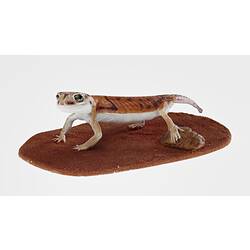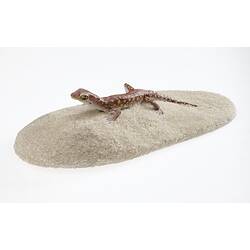The 1894 Horn Expedition has been widely acclaimed for increasing the knowledge of Central Australia by mapping unchartered areas and documenting its unique fauna, carried out by five distinguished scientists including Baldwin Spencer. Anthropological studies were part of the expedition's work and inspired the beginning of Spencer's life long dedication to studying Australia's indigenous inhabitants.
While the 1994 Centenary Expedition was celebrating the 100 year anniversary of the Horn Expedition, their aim was to carry out animal research that would build on the earlier expedition's findings. This was felt to be so important that another three annual explorations in 1995, 1996 and 1997 were organised by the museum to continue their invertebrate work.
The Horn Expedition took place in late winter when invertebrate activity is reduced, where as the Centenary Expedition was able to record a range of invertebrate fauna in their various habitats of six different geographical areas. The Horn Expedition was one of discovery and documentation while the Centenary Expedition also included environmental conservation and management. In the 1894 Expedition the small band of scientists were given some assistance by pastoralists and government employees living in Central Australia. In 1994 the museum scientists collaborated with park managers and traditional owners, and benefitted from field assistance provided by volunteers and Friends of the Museum of Victoria.
While the 1894 Expedition alerted the scientific community to the unique fauna of Central Australia, a large proportion of the invertebrates collected between 1994 and 1997 were new to science. In 1894 the indigenous population were a subject of study, while in 1994 they collaborated with the expedition sharing traditional knowledge of invertebrates to enhance understanding of the ecology of the land.
The Horn Expedition relied on camels for transportation in unchartered territory. Their route was largely determined by survival needs such as water and supplies. The Centenary Expedition travelled with all modern equipment and conveniences in modern vehicles on established roads and tracks, following maps supplied to them. They could not follow the precise route of the Horn Expedition needing to consider pastoral leases, national parks, indigenous lands and sacred sites. The 1894 campsites were selected for their invertebrate collecting promise nearby while the 1994 expedition selected their campsites for landscape and vegetation type. The Horn Expedition was privately equipped and sponsored by William Austin Horn, a wealthy South Australian pastoralist, mining magnate and philanthropist who accompanied the expedition in its early stages.
More Information
-
Keywords
-
Authors
-
Article types





